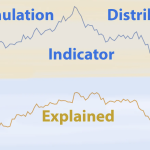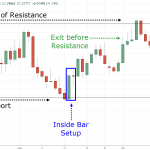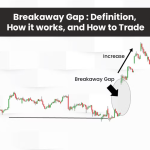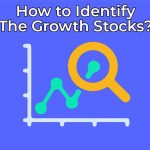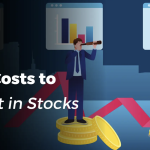
NYSE Composite Index
The NYSE Composite Index is a stock market index that tracks the performance of all common stocks listed on the New York Stock Exchange (NYSE), one of the world’s largest and most well-established stock exchanges. Covering a broad array of companies across various industries, the NYSE Composite is designed to provide a comprehensive view of the overall performance of the U.S. stock market, with a particular emphasis on large-cap companies. The index includes not just U.S.-based firms but also many international corporations, giving it a global scope.
What is the NYSE Composite Index?
The NYSE Composite Index measures the performance of more than 2,000 stocks listed on the New York Stock Exchange, including large-cap, mid-cap, and small-cap companies from various sectors. Unlike more specialized indices that focus on specific industries or sectors, the NYSE Composite provides a broad representation of the entire stock market. It is a market capitalization-weighted index, meaning the largest companies (by market value) have the greatest impact on the index’s performance.
The NYSE Composite includes companies from various sectors, such as technology, healthcare, finance, consumer goods, and industrials. It also features Real Estate Investment Trusts (REITs) and closed-end funds, making it more diversified than many other indices that might exclude certain asset types.
When to Use the NYSE Composite Index?
The NYSE Composite Index is an excellent tool for several purposes, from market analysis to portfolio benchmarking. Here are some situations when you might use this index:
- Tracking Overall Market Performance: The NYSE Composite is widely regarded as a barometer for the performance of the overall U.S. stock market. Since it includes a broad range of companies across multiple sectors, it provides a holistic view of how the market is performing as a whole. It is especially valuable when assessing trends across both domestic and international markets, as many global companies are listed on the NYSE.
- Benchmarking Large-Cap Portfolios: Because many of the largest companies in the world are listed on the NYSE, the NYSE Composite can be used as a benchmark for investors with portfolios that focus on large-cap, blue-chip stocks. Comparing a portfolio’s performance against the NYSE Composite helps investors determine how well their investments are performing relative to the broader market.
- Diversification Analysis: Since the NYSE Composite includes stocks from a variety of sectors, it is a useful index for assessing diversification. Investors looking to gauge how different sectors are performing can use the index as a reference point, allowing them to see trends across industries like finance, healthcare, and industrials.
- Global Market Insight: While it is a U.S.-focused index, the NYSE Composite also includes many international companies. This makes it useful for investors who want to track the performance of multinational corporations and get a sense of how global economic conditions are impacting large global firms.
- Stability in Long-Term Investments: The NYSE Composite is weighted toward large, established companies, many of which offer dividends and have more stable financials. This makes the index appealing to long-term, risk-averse investors who want exposure to well-established companies with lower volatility compared to the tech-heavy Nasdaq Composite or the more sector-specific indices.
Why Use the NYSE Composite Index?
There are several reasons why investors and analysts use the NYSE Composite Index:
- Broad Market Representation: The NYSE Composite is one of the most comprehensive indices in the world, offering a clear view of the entire stock market. While other indices may focus on specific sectors (such as technology or finance), the NYSE Composite spans across industries, providing a broader representation of the U.S. and global markets.
- Stability and Lower Volatility: The NYSE Composite includes many well-established companies, including blue-chip stocks known for their stable earnings and long track records. For investors looking for an index with lower volatility compared to tech-heavy indices, the NYSE Composite offers a more stable alternative, especially for those focused on long-term investments.
- Diversification Across Sectors: The index includes companies from various industries, allowing investors to track sector performance and ensure their portfolios are well-diversified. This is helpful for identifying market trends in areas like industrials, healthcare, and financials, which may not be as prominently represented in other indices.
- Focus on Dividends: Many of the large-cap companies in the NYSE Composite are dividend-paying stocks, making it a good index to follow for investors focused on income generation. The inclusion of REITs and closed-end funds also adds a level of exposure to income-generating assets.
- International Exposure: A notable feature of the NYSE Composite is that it includes many foreign companies that list their shares on the NYSE. For investors interested in gaining international exposure without directly investing in foreign stock exchanges, the NYSE Composite offers a convenient way to do so.
Why Invest in the NYSE Composite?
For investors looking to build a diversified, stable portfolio, the NYSE Composite is an appealing choice. The broad-based nature of the index, its heavy weighting toward large, established firms, and its inclusion of international companies all contribute to its value as a long-term investment tool. Many exchange-traded funds (ETFs) and mutual funds are based on the NYSE Composite, allowing individual investors easy access to the performance of the entire index.
While the NYSE Composite may not have the high growth potential of tech-heavy indices like the Nasdaq, it offers more stability and less volatility. This makes it an ideal choice for conservative investors looking for steady, long-term growth or income through dividends.
In summary, the NYSE Composite Index is an essential tool for investors and analysts seeking a broad overview of the U.S. stock market. It offers a diverse range of companies, including many large-cap, international, and income-generating stocks, making it a valuable benchmark for both performance measurement and long-term investment strategies.


